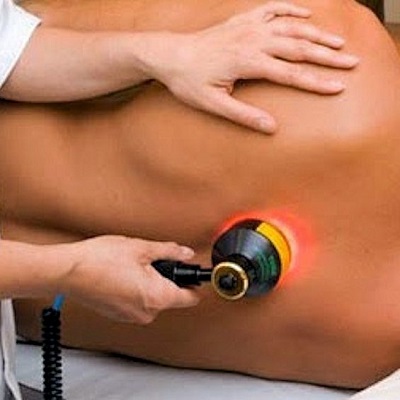Introduction:
In recent years, the field of medical technology has seen significant advancements, particularly in non-invasive therapies. Among these innovations, Intravenous Low-Level Laser Therapy (IV LLT) has emerged as a promising treatment option, blending cutting-edge technology with traditional medical practices. Experts in Dubai are at the forefront of exploring and harnessing the potential of IV LLT, offering new hope to patients seeking effective, non-pharmaceutical solutions for various health conditions.
Understanding IV Low-Level Laser Therapy:
IV LLT involves the use of low-level lasers to deliver therapeutic light energy directly into the bloodstream through intravenous infusion. This approach capitalizes on the principles of photobiomodulation, where specific wavelengths of light stimulate cellular function and promote healing. Unlike high-power lasers used in surgery, low-level lasers emit light at levels that do not generate heat or cause tissue damage, making them safe for systemic application.
Mechanism of Action:
The therapeutic effects of IV LLT are based on its ability to interact with chromophores—light-sensitive molecules—within cells. When administered intravenously, these photons are absorbed by mitochondria, the powerhouse of cells, enhancing cellular respiration and ATP production. This process boosts energy levels within cells, accelerates healing processes, and reduces oxidative stress and inflammation.
Applications in Medical Practice:
Dubai experts have explored IV LLT across various medical specialties, including:
- Pain Management: By reducing inflammation and stimulating tissue repair, IV LLT offers relief from chronic pain conditions such as arthritis and fibromyalgia.
- Sports Medicine: Athletes benefit from accelerated recovery times post-injury or intense physical exertion, promoting faster return to peak performance levels.
- Neurological Disorders: Studies suggest potential benefits in conditions like stroke recovery, neuropathy, and cognitive decline, although further research is ongoing.
- Immune Support: IV LLT has shown promise in boosting immune function, helping the body fight infections and recover from illnesses quicker.
- Anti-Aging: The therapy’s ability to improve mitochondrial function and cellular regeneration contributes to healthier skin, potentially reducing the visible signs of aging.
Clinical Evidence and Research:
While IV LLT shows promising results in clinical settings, ongoing research aims to solidify its efficacy and expand its applications. Dubai’s medical community actively conducts studies to validate these findings and refine treatment protocols, ensuring safe and effective therapeutic outcomes for patients.
Patient Experience and Safety:
Patients undergoing IV LLT typically report minimal discomfort during treatment, with sessions lasting about 30-60 minutes. Safety protocols are paramount, with practitioners ensuring precise dosing and monitoring to avoid adverse effects. As with any medical intervention, individual responses may vary, highlighting the importance of personalized treatment plans and ongoing medical supervision.
Conclusion:
In conclusion, Intravenous Low-Level Laser Therapy in Dubai represents a groundbreaking approach in modern medicine, blending the latest advancements in laser technology with therapeutic benefits for various health conditions. Dubai’s experts are at the forefront of research and clinical application, striving to harness the full potential of IV LLT to improve patient outcomes and quality of life. As research continues and awareness grows, IV LLT holds promise as a safe, non-invasive adjunct to conventional medical treatments.
FAQs about IV Low-Level Laser Therapy:
1. What conditions can IV LLT treat? IV LLT is used to manage chronic pain conditions, support immune function, aid in sports injury recovery, and potentially benefit neurological disorders and anti-aging treatments.
2. Is IV LLT safe? Yes, IV LLT is considered safe when administered by trained professionals. It uses low-level lasers that do not produce heat or cause tissue damage.
3. How long does an IV LLT session last? Sessions typically last between 30 to 60 minutes, depending on the treatment protocol and the condition being addressed.
4. Are there any side effects of IV LLT? Side effects are rare and mild, including temporary skin redness at the infusion site. However, individual responses may vary.
5. Is IV LLT covered by insurance? Coverage varies by insurance provider and country. Patients should consult with their insurance company to determine coverage options.
6. How many treatments are needed to see results? The number of treatments varies based on the condition being treated and individual response. A treatment plan is typically tailored to each patient’s needs.
7. Who is a good candidate for IV LLT? Patients seeking non-pharmaceutical alternatives for pain management, enhanced recovery from injuries, immune support, or anti-aging benefits may be candidates for IV LLT. Consultation with a healthcare provider is necessary to determine suitability.
8. Is IV LLT FDA-approved? While specific applications of IV LLT may have FDA approval, it is essential to verify the regulatory status of the therapy for the intended use.
9. Can IV LLT be combined with other treatments? Yes, IV LLT can be used as a complementary therapy alongside conventional medical treatments. Healthcare providers can integrate it into comprehensive treatment plans based on individual patient needs.
10. Where can I find IV LLT treatment in Dubai? Medical centers and clinics in Dubai specializing in integrative medicine and advanced therapies typically offer IV LLT. Patients should seek qualified practitioners and facilities for safe and effective treatment.






Comments